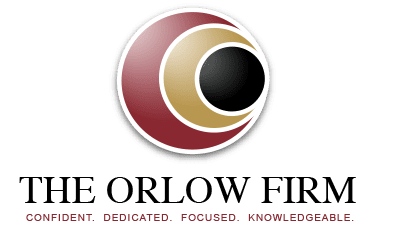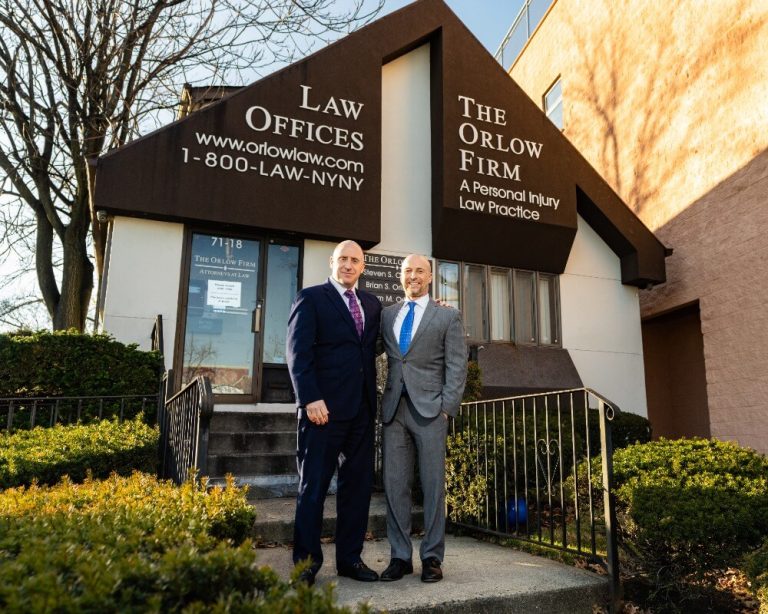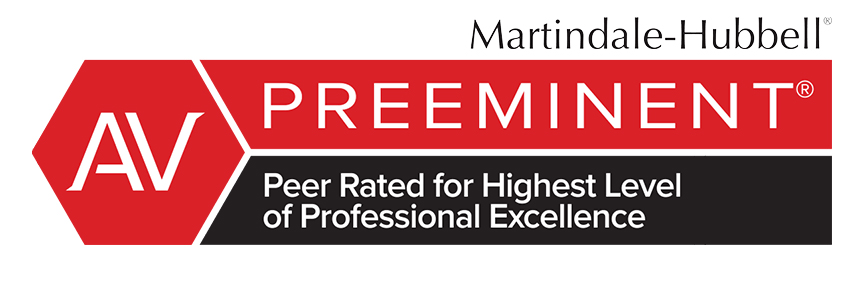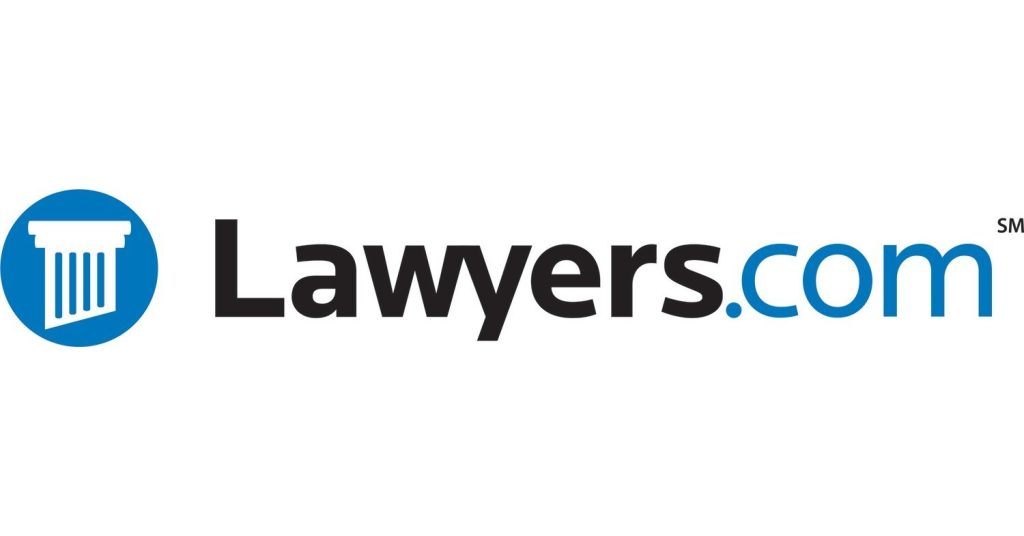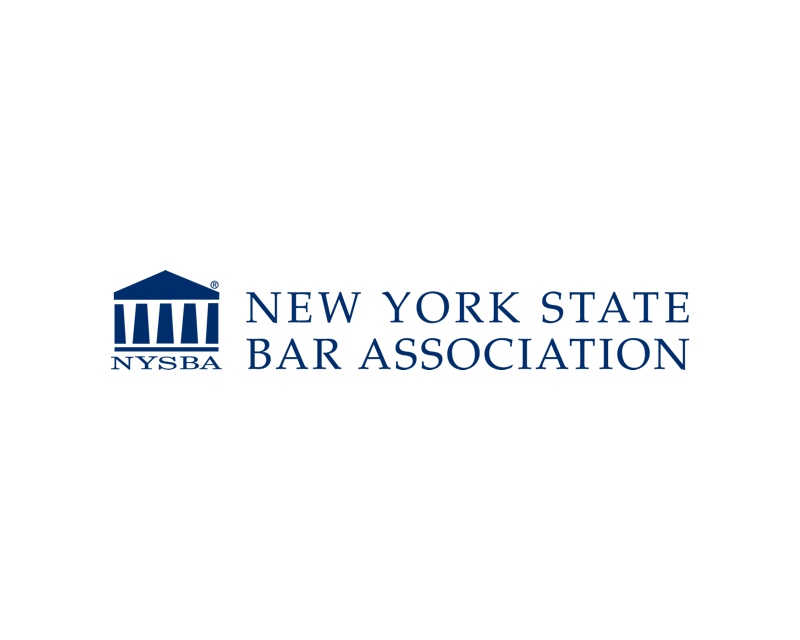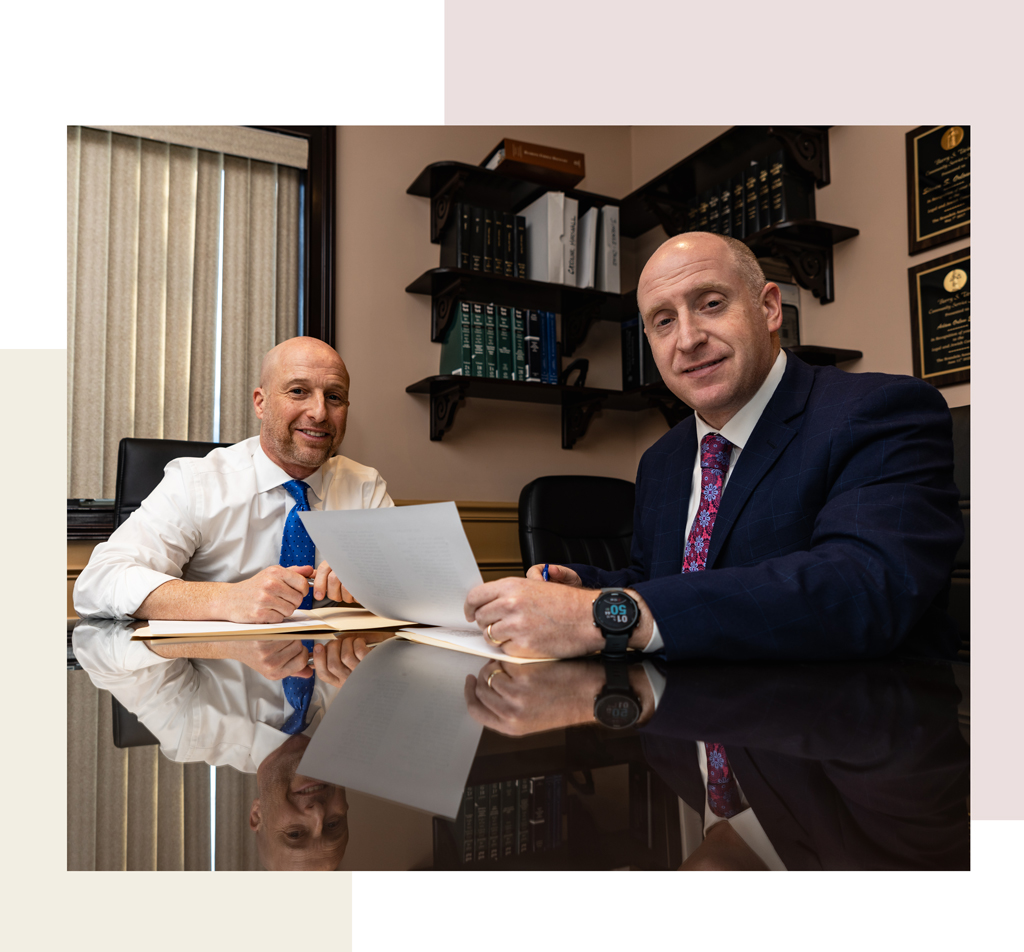The Following People Contributed to This Page
Cindy Cordova is a seasoned legal writer with over seven years of experience crafting clear, informative, and professional content for law firm websites. With a B.A. in English from Trinity Christian College, she combines her strong writing background with a deep understanding of legal topics to help firms connect with their clients through trustworthy and accessible content.
- May 26, 2025
Quick Overview: Liability Insurance Claims in Construction Accidents
In construction accident liability, if a worker is injured due to a third party’s negligence, they can file a third-party liability claim to seek compensation beyond workers’ compensation. Commercial General Liability (CGL) insurance covers bodily injury or property damage during construction, including harm to workers, visitors, or bystanders.
Third-Party Liability Claims:
Purpose:
These claims allow injured workers to seek compensation for damages not covered by workers’ compensation.
Examples:
A claim can be filed against the manufacturer of a defective piece of equipment that caused an injury, or against a subcontractor whose negligence contributed to the accident.
Damages Recoverable:
In addition to medical expenses and lost wages, third-party liability claims can cover pain and suffering, emotional distress, and future lost earnings.
Commercial General Liability (CGL) Insurance:
Coverage:
CGL policies cover claims for physical injury or property damage that occur during contracting or construction work.
Who is Covered:
Workers, guests, or even bystanders near the construction site can file claims under a CGL policy.
What is Covered:
CGL covers injuries, property damage, legal fees, and settlements related to construction accidents.
What is Not Covered:
Intentional damage, employee injuries (covered by workers’ compensation), and contractual liabilities are typically excluded.
In a city like New York, where construction accidents can be complex due to the density and scale of projects, knowing the ins and outs of liability insurance claims is indispensable. If you or a loved one has been involved in a construction accident, reaching out to a knowledgeable attorney can help guide you through the process. For personalized assistance, contact The Orlow Firm at (646) 647-3398 to discuss your specific situation with our dedicated legal team.
Who is Liable in New York City Construction Accidents?
Determining liability in construction accidents in New York City can be complex due to the various parties involved in a construction project. Understanding who is liable is crucial for injured workers seeking compensation through liability insurance claims. Below, we outline the key parties that may be held responsible in construction accidents.
- General Contractors: The general contractor oversees the entire construction project and is responsible for ensuring that the site is safe. If a construction accident occurs due to unsafe conditions, the general contractor may be held liable for failing to maintain a safe working environment.
- Subcontractors: Various subcontractors may be involved in a construction project, each responsible for specific tasks. If an accident is caused by the negligence of a subcontractor or their employees, that subcontractor may be held liable.
- Property Owners: In some cases, the owner of the property may be liable, especially if they have control over the work being done or if they failed to address known hazards on the property.
- Equipment Manufacturers: If a construction accident is caused by defective machinery or equipment, the manufacturer or supplier of that equipment may be liable under product liability laws.
- Architects and Engineers: These professionals are responsible for designing safe structures. If an accident occurs due to design flaws or failure to adhere to safety standards, they may be held accountable.
In New York City, construction sites are subject to strict regulations and safety standards. The New York Labor Law, including sections 200, 240, and 241, provides specific protections for construction workers, holding certain parties strictly liable for accidents that occur due to safety violations.
For instance, New York Labor Law 240, often referred to as the “Scaffold Law,” imposes strict liability on property owners and contractors for gravity-related injuries, such as falls from heights. This means that if a worker is injured due to inadequate safety measures like faulty scaffolding, the property owner or contractor can be held liable regardless of fault.
Given the complexities involved in determining liability, it’s crucial for injured workers to seek legal guidance. If you or a loved one has been injured in a construction accident in New York City, understanding your legal rights and options is essential. Contact The Orlow Firm at (646) 647-3398 for a consultation with our dedicated team, who can help navigate the intricacies of construction accident claims and ensure you receive the compensation you deserve.
How to File a Liability Insurance Claim After a Construction Accident
Filing a liability insurance claim after a construction accident can be a daunting process, especially amidst the complexities of New York City’s legal landscape. Understanding the necessary steps can help streamline your claim and ensure you receive the compensation you deserve. Here’s a detailed guide on how to file a liability insurance claim after a construction accident:
- Seek Immediate Medical Attention : Your health and safety should be your top priority. Even if injuries seem minor, it’s crucial to seek medical attention immediately. Not only does this ensure your well-being, but medical records will also serve as vital evidence if you decide to file a claim.
- Report the Accident : Notify your employer about the accident as soon as possible. In New York, this is typically required within 30 days of the incident. Your employer should then file a report with the Workers’ Compensation Board. This step is crucial for documenting the incident officially.
- Gather Evidence : Collect as much evidence as possible from the accident scene. This includes taking photographs, securing witness statements, and obtaining any available video footage. Detailed documentation can significantly strengthen your claim.
- Identify All Potentially Liable Parties : Construction sites often involve multiple parties, such as contractors, subcontractors, and equipment manufacturers. Identifying all parties who may be liable for your injuries is critical. Liability might not just fall on your employer but also on other entities involved in the construction project.
- File the Claim : Once you have gathered the necessary information and evidence, file your liability insurance claim. This typically involves submitting a detailed account of the accident, including medical records, evidence of lost wages, and any other relevant documentation supporting your claim.
- Consult with a Personal Injury Attorney : Navigating the complexities of liability insurance claims in construction accidents can be challenging. Consulting with a knowledgeable personal injury attorney can provide invaluable guidance. They can help you understand your rights, negotiate with insurance companies, and pursue additional claims if necessary.
Filing a liability insurance claim in the aftermath of a construction accident involves numerous steps and legal intricacies. Ensuring you follow these steps carefully can significantly affect the outcome of your claim. If you need assistance or have questions about your specific situation, contacting a dedicated attorney can make a significant difference. At The Orlow Firm, our team is ready to help. Reach out to us at (646) 647-3398 for a consultation and let us guide you through the process.
Challenges in Navigating Liability Insurance Claims for Construction Accidents
Navigating liability insurance claims following a construction accident in New York City can be a daunting task, especially given the complexities involved in these cases. Construction sites are inherently risky, and when accidents occur, determining liability and securing compensation through insurance claims can present several challenges.
- Complexity of Liability Determination – Construction accidents often involve multiple parties, including contractors, subcontractors, property owners, and equipment manufacturers. Determining who is liable can be complicated due to the overlapping responsibilities and contractual obligations. Each party may have different insurance policies, and understanding how these policies interact requires careful legal analysis.
- Understanding Insurance Policies – Liability insurance policies in the construction industry are often complex and filled with legal jargon. Policyholders may find it challenging to interpret coverage limits, exclusions, and conditions. For instance, certain policies may exclude coverage for specific activities or require strict compliance with safety regulations. Understanding these details is crucial to ensuring that claims are not unjustly denied.
- Gathering Evidence – To successfully file a liability insurance claim, substantial evidence is needed to support the claim. This includes accident reports, witness statements, photographs of the accident scene, and medical records. Collecting and preserving this evidence can be difficult, especially in the chaotic aftermath of a construction accident. Additionally, construction sites are often altered quickly, which can result in the loss of crucial evidence if not documented promptly.
- Dealing with Insurance Companies – Insurance companies may attempt to minimize payouts by disputing the details of the claim or the extent of the injuries. They might argue that the injured party was partially responsible for the accident or that the injuries are not as severe as claimed. Navigating these negotiations requires persistence and a thorough understanding of the legal rights of the injured party.
- Compliance with Legal Deadlines – Filing a claim involves strict deadlines, and missing these can jeopardize the ability to recover compensation. In New York, there are specific time limits for notifying employers and insurance companies about the accident, as well as for filing a claim. Keeping track of these deadlines while dealing with the aftermath of an injury can be overwhelming.
- Coordination with Workers’ Compensation – Many construction workers are covered under workers’ compensation, which provides benefits regardless of fault. However, pursuing a liability insurance claim in addition to a workers’ compensation claim can be complex, as it involves coordinating benefits and ensuring that the injured party receives full compensation without duplicating benefits.
Given these challenges, it is often beneficial to seek guidance from legal professionals who can help navigate the intricacies of liability insurance claims in construction accidents. If you or a loved one has been involved in a construction accident in New York City, contacting The Orlow Firm at (646) 647-3398 can provide you with the support and advice needed to pursue your claim effectively.
The Role of Workers Compensation in Construction Accident Claims
In the realm of construction accidents in New York City, workers’ compensation plays a pivotal role in providing financial support to injured workers. Understanding how this system interacts with liability insurance claims is crucial for anyone involved in a construction accident.
What is Workers’ Compensation?
Workers’ compensation is a form of insurance that employers are required to carry, which provides benefits to employees who suffer job-related injuries or illnesses. In New York, this system ensures that injured workers receive necessary medical treatment and compensation for lost wages, regardless of who was at fault for the accident.
How Workers’ Compensation Intersects with Liability Insurance
While workers’ compensation covers medical expenses and a portion of lost wages, it does not provide compensation for pain and suffering or other non-economic damages. This is where liability insurance claims come into play. If a third party (such as a subcontractor or equipment manufacturer) is found to be negligent, an injured worker may be able to file a liability insurance claim against that party to recover additional damages.
Here are some key points to consider:
- Exclusive Remedy Rule: Generally, workers’ compensation is the “exclusive remedy” for injured workers, meaning they cannot sue their employer for additional damages. However, claims can be made against third parties.
- Third-Party Claims: If a construction worker’s injury was caused by a third party’s negligence, the worker may pursue a liability insurance claim against that party. This could include other contractors, equipment manufacturers, or property owners.
- Coordination of Benefits: It’s essential to understand how workers’ compensation benefits are coordinated with any third-party liability claims to ensure that the injured worker receives full compensation without double recovery.
Steps for Filing Workers’ Compensation and Liability Claims
If you’re injured on a construction site, it’s important to follow these steps:
- Report the injury to your employer immediately and seek medical attention.
- File a workers’ compensation claim to cover medical expenses and lost wages.
- Consult with a personal injury attorney to explore the possibility of a third-party liability claim for additional damages.
Challenges and Considerations
Navigating the intersection of workers’ compensation and liability insurance claims can be complex. Delays in reporting, misunderstandings about coverage, and disputes over liability can complicate the process. It’s beneficial to have legal guidance to ensure your rights are protected and to maximize your potential recovery.
For comprehensive assistance with construction accident claims, including workers’ compensation and third-party liability issues, contact The Orlow Firm at (646) 647-3398. Our dedicated team is here to help you understand your rights and pursue the compensation you deserve.
Steps to Take Immediately After a Construction Accident
Experiencing a construction accident can be overwhelming and stressful. Knowing what steps to take immediately after such an incident is crucial for protecting your rights and ensuring you receive the benefits you’re entitled to through liability insurance claims. Here’s a guide to help you through the initial aftermath of a construction accident in New York City.
- Seek Immediate Medical Attention: Your health is the top priority. Even if you feel fine, some injuries may not be immediately apparent. Prompt medical evaluation can ensure that any injuries are documented, which is essential for your insurance claim.
- Report the Accident: Notify your supervisor or employer about the accident as soon as possible. In New York, employers are required to document workplace accidents, which can be critical evidence when filing a liability insurance claim.
- Document the Scene: If you’re able, take photos or videos of the accident scene, including any equipment involved, safety gear, and visible injuries. This documentation can provide crucial evidence in your claim.
- Collect Witness Information: If there are witnesses to the accident, gather their contact information. Their statements can be valuable in supporting your account of the incident.
- File a Workers’ Compensation Claim: In addition to liability insurance, you should file a workers’ compensation claim to cover immediate medical expenses and lost wages. This is a separate process but equally important.
- Keep Detailed Records: Maintain a file of all documents related to the accident, including medical records, accident reports, and correspondence with insurance companies. Detailed records will support your claim and help ensure you receive all entitled benefits.
- Consult with a Personal Injury Attorney: Navigating liability insurance claims can be complex. Consulting with a knowledgeable attorney can provide guidance on your rights and help ensure that you receive fair compensation. The Orlow Firm is available to discuss your case and provide personalized assistance. Call us at (646) 647-3398.
Taking these steps can help protect your rights and strengthen your liability insurance claim following a construction accident. For further assistance, don’t hesitate to reach out to The Orlow Firm.
Legal Rights of Injured Workers in New York City Construction Sites
Injured workers on construction sites in New York City have specific legal rights designed to protect their well-being and ensure they receive fair compensation. Understanding these rights is crucial for anyone working in the high-risk construction industry.
Right to a Safe Workplace: Under the Occupational Safety and Health Administration (OSHA) regulations, employers are required to provide a safe working environment. This includes implementing safety protocols, providing necessary protective equipment, and ensuring that all machinery and equipment are in safe working condition.
Workers’ Compensation Benefits: In New York, most employers are required to carry workers’ compensation insurance. This insurance provides benefits to workers who are injured on the job, covering medical expenses and a portion of lost wages. Workers’ compensation is a no-fault system, meaning workers can receive these benefits without having to prove that the employer was negligent.
Right to File a Third-Party Claim: While workers’ compensation prevents employees from suing their employers, injured workers may have the right to file a claim against a third party whose negligence contributed to the accident. For example, if a piece of equipment malfunctions due to a manufacturer’s defect, the injured worker might have grounds to pursue a claim against the manufacturer.
Protection Under New York Labor Laws: New York State has specific laws, such as the Scaffold Law (Labor Law 240), that provide additional protections for construction workers. This law holds property owners and contractors liable for ensuring proper safety measures when workers are performing tasks at height. If these safety measures are not in place and a worker is injured as a result, the worker may have a strong legal claim.
Right to Legal Representation: Injured workers have the right to seek legal representation to help navigate the complexities of insurance claims and potential lawsuits. An attorney can assist in ensuring that all available benefits are received and can help pursue additional compensation through third-party claims if applicable.
- Seek Immediate Medical Attention : Prioritizing health is critical. Documentation of injuries by a healthcare professional is also essential for any legal claims.
- Report the Injury : Notify your employer as soon as possible. Timely reporting is crucial for workers’ compensation claims.
- Document Everything : Keep detailed records of the accident, including photographs, witness statements, and medical reports.
- Consult an Attorney : Legal guidance can help you understand your rights and the best course of action for your situation. For personalized assistance, contact The Orlow Firm at (646) 647-3398.
Understanding and exercising these rights can significantly impact the outcome of a construction accident claim. If you or a loved one has been injured on a construction site in New York City, it’s important to seek knowledgeable legal assistance to ensure your rights are fully protected.
How Liability Insurance Protects Construction Companies and Workers
Liability insurance plays a crucial role in protecting both construction companies and workers in the event of accidents on construction sites. In a bustling city like New York, where construction projects are frequent and often complex, understanding how liability insurance functions can provide peace of mind and financial protection for all parties involved.
Protection for Construction Companies
Construction companies in New York City carry liability insurance to safeguard against financial losses stemming from accidents or injuries that occur on their sites. Here are several ways liability insurance protects these companies:
- Legal Defense Costs: If a lawsuit arises from a construction accident, liability insurance covers the legal expenses associated with defending the company in court. This includes attorney fees, court costs, and any settlements or judgments up to the policy limits.
- Settlement and Judgment Costs: In cases where the construction company is found liable for an accident, liability insurance covers the costs of settlements or court-ordered judgments, ensuring that the company can continue operations without facing financial ruin.
- Reputation Management: By addressing claims efficiently and responsibly, liability insurance helps construction companies maintain their reputation by demonstrating a commitment to worker safety and accountability.
Protection for Workers
While liability insurance primarily protects construction companies, it indirectly benefits workers by ensuring that there are funds available to cover compensation claims. Here’s how it helps:
- Medical Expenses: Medical treatment for a direct employee is paid by workers’ compensation. A liability policy would pay medical damages only if a successful third-party lawsuit is brought against the insured construction company.
- Lost Wages: Lost-wage benefits for an injured employee come from workers’ compensation. A liability policy would owe lost-earning damages only when a third party proves liability in court.
- Compensation for Pain and Suffering: Pain-and-suffering damages are available only through a personal-injury action against the insured (for instance, by an injured subcontractor’s worker or a passer-by); they are not paid automatically to the employer’s own employees.
Ensuring Compliance and Safety
Liability insurance also encourages construction companies to adhere to safety regulations and implement rigorous safety protocols. This not only reduces the likelihood of accidents but also minimizes the potential for costly claims. By fostering a safer work environment, both companies and workers benefit from reduced risks and enhanced protection.
Understanding the role of liability insurance in construction accidents is essential for both employers and employees. If you or a loved one has been involved in a construction accident and need assistance navigating liability insurance claims, contact The Orlow Firm at (646) 647-3398. Our dedicated team is here to provide the guidance and support you need to protect your rights and secure the compensation you may be entitled to.
What to Do if Your Liability Insurance Claim is Denied
If your liability insurance claim has been denied following a construction accident in New York City, it can be a daunting experience. However, there are several steps you can take to address the situation and potentially reverse the denial. Understanding your rights and the necessary actions can make a significant difference in the outcome of your claim.
- Review the Denial Letter – The first step is to thoroughly review the denial letter from the insurance company. This document should outline the specific reasons for the denial of your claim. Understanding these reasons is crucial, as it will inform your next steps and help you address any issues directly.
- Gather Supporting Documentation – Collect all relevant documentation that supports your claim. This includes medical records, accident reports, witness statements, and any correspondence with the insurance company. Having a comprehensive file will be essential if you need to contest the denial.
- Contact the Insurance Company – Reach out to the insurance company to discuss the denial. Sometimes, claims are denied due to simple errors or missing information. Speaking with a representative may provide clarity and allow you to resolve any misunderstandings. Make sure to document all communications for future reference.
- Consider Filing an Appeal – Most insurance companies have an appeal process for denied claims. If you believe your claim was unjustly denied, you can file an appeal. This process typically involves submitting additional documentation and a written statement explaining why the denial was incorrect. Pay close attention to any deadlines for filing an appeal.
- Consult with a Personal Injury Attorney – If your appeal is unsuccessful or if you need assistance navigating the process, it may be beneficial to consult with a personal injury attorney. An attorney can provide guidance, help gather evidence, and represent your interests in negotiations or legal proceedings. For personalized assistance, consider contacting The Orlow Firm at (646) 647-3398.
- Explore Alternative Dispute Resolution – If direct negotiations with the insurance company do not yield a favorable outcome, you might consider alternative dispute resolution methods such as mediation or arbitration. These processes can be less formal and may offer a quicker resolution compared to traditional litigation.
- Be Prepared for Legal Action – In cases where all other options have been exhausted, you may need to consider filing a lawsuit. This step should be taken with careful consideration and typically requires professional legal representation. A lawsuit can be a lengthy and costly process, but it may be necessary to secure the compensation you may be entitled to.
Dealing with a denied liability insurance claim after a construction accident can be frustrating and complex. However, by taking these steps, you can improve your chances of successfully challenging the denial and obtaining the compensation you need for your recovery. For further guidance and support, reach out to The Orlow Firm at (646) 647-3398 to discuss your specific situation with a dedicated legal professional.
Common Causes of Construction Accidents in New York City
Construction sites in New York City are bustling hubs of activity, often involving multiple contractors, heavy machinery, and complex projects. Unfortunately, this environment can also be ripe for accidents. Understanding the common causes of construction accidents can help workers, employers, and even passersby stay vigilant and take necessary precautions. Below, we outline some of the most frequent causes of construction accidents in NYC.
- Falls from Heights : Many construction projects involve working on scaffolds, ladders, or rooftops. Falls from these heights are one of the leading causes of construction-related injuries and fatalities. Proper safety measures, such as harnesses and guardrails, are crucial but sometimes overlooked.
- Falling Objects : Tools, materials, and debris can fall from elevated work areas, posing a significant risk to workers below. Hard hats and safety nets can mitigate these risks, but accidents still occur due to negligence or insufficient safety protocols.
- Electrocutions : Construction sites often have exposed wiring, power lines, and electrical systems. Workers can be at risk of electrocution if these are not properly installed or maintained. Regular safety checks and adherence to electrical safety standards are essential to prevent such accidents.
- Machinery Accidents : Heavy machinery such as cranes, bulldozers, and forklifts are commonplace on construction sites. Accidents can occur due to equipment malfunction, inadequate training, or operator error. Ensuring all machinery is well-maintained and operated by trained personnel can reduce these incidents.
- Slips, Trips, and Falls : Uneven surfaces, wet floors, and debris can cause workers to slip, trip, or fall. Keeping the work area clean and well-organized, along with using appropriate footwear, can help prevent these common accidents.
- Exposure to Hazardous Materials : Construction workers may be exposed to harmful substances like asbestos, lead, or chemicals. Proper protective gear and adherence to safety regulations are necessary to minimize health risks.
- Structural Collapses : Inadequate support structures, faulty design, or poor construction practices can lead to partial or complete building collapses, endangering workers and the public. Rigorous inspection and adherence to building codes are vital to prevent such disasters.
These accidents not only result in injuries but can also lead to complex liability insurance claims. Understanding these common causes can aid in implementing preventive measures and preparing for potential claims. If you or a loved one has been injured in a construction accident, it’s crucial to understand your rights and the steps to take next. For personalized guidance, contact The Orlow Firm at (646) 647-3398 to discuss your situation with a dedicated attorney.
Frequently Asked Questions About Construction Accident Liability Claims
When dealing with construction accidents in New York City, liability insurance claims can be a complex subject. Below, we address some frequently asked questions to help you better understand the process and your rights.
- What is liability insurance in the context of construction accidents? Liability insurance—usually a Commercial General Liability (CGL) policy—covers a contractor’s legal defense and pays damages if a third party (e.g., a visitor or subcontractor’s worker) sues over an on-site injury or property damage. Injuries to the company’s own employees are handled through workers’ compensation, not the CGL policy.
- Who can file a liability insurance claim after a construction accident? Generally, anyone injured on a construction site—whether a worker, pedestrian, or visitor—may be eligible to file a claim against the liable party’s insurance. The claim aims to cover medical expenses, lost wages, and other related costs.
- How is liability determined in construction accident cases? Liability can depend on several factors, including the cause of the accident, safety violations, and negligence. In New York, multiple parties, such as contractors, subcontractors, or property owners, may be held liable depending on their involvement and the circumstances.
- What steps should I take if injured in a construction accident? Immediately seek medical attention, report the accident to your employer or site manager, document the scene and your injuries, and consult with an attorney to evaluate your case. These steps can help preserve your rights and strengthen your claim.
- Can I file a claim if I am receiving workers’ compensation? Yes, workers’ compensation and liability insurance claims are separate. While workers’ compensation covers medical expenses and a portion of lost wages regardless of fault, a liability claim can address additional damages such as pain and suffering if another party’s negligence contributed to the accident.
- What if my liability insurance claim is denied? If your claim is denied, you have the right to appeal the decision. It’s crucial to understand the reason for the denial and gather any additional evidence needed to support your case. Consulting with a legal professional can greatly assist in navigating this process.
- How long do I have to file a liability insurance claim in New York? The statute of limitations for personal injury claims in New York is generally three years from the date of the accident. However, specific circumstances might affect this timeline, so it’s advisable to seek legal advice promptly.
If you have additional questions or need assistance with a construction accident claim, The Orlow Firm is here to help. Contact our knowledgeable and compassionate legal team at (646) 647-3398 to discuss your situation and explore your options.
How The Orlow Firm Assists with Construction Accident Claims
When dealing with the aftermath of a construction accident in New York City, understanding how to navigate liability insurance claims can be daunting. At The Orlow Firm, we are committed to assisting injured workers and their families through these challenging times by offering comprehensive legal support tailored to the complexities of construction accident claims.
- Thorough Investigation of the Accident – Our process begins with a meticulous investigation of the construction accident. This involves gathering evidence, reviewing safety protocols, interviewing witnesses, and consulting with experts to establish the circumstances surrounding the incident. By doing so, we aim to identify all responsible parties, which may include contractors, subcontractors, site owners, or equipment manufacturers.
- Determining Liability and Insurance Coverage – Construction accidents often involve multiple parties and insurance policies. Our attorneys work diligently to determine which parties are liable and to what extent. We examine all relevant insurance policies, such as general liability insurance and workers’ compensation, to ensure that all potential sources of compensation are considered. This comprehensive approach helps maximize the recovery for our clients.
- Filing and Managing Insurance Claims – Navigating insurance claims can be complex and time-consuming. We assist by preparing and filing claims on behalf of our clients, ensuring all documentation is complete and accurate. Our team handles communication with insurance companies, striving to expedite the claims process and negotiate fair settlements. We aim to alleviate the administrative burden from our clients, allowing them to focus on recovery.
- Legal Representation and Advocacy – If an insurance claim is denied or if the settlement offer is inadequate, The Orlow Firm is prepared to advocate for our clients in court. Our attorneys are experienced in litigation and will build a compelling case to pursue the compensation our clients deserve. We are dedicated to protecting our clients’ rights and ensuring they receive justice.
- Personalized Support and Guidance – Understanding that each case is unique, we provide personalized legal strategies tailored to the individual needs and circumstances of our clients. Our attorneys maintain open lines of communication, offering compassionate support and clear explanations of the legal process. We are here to answer any questions and provide guidance every step of the way.
If you or a loved one has been involved in a construction accident in New York City, The Orlow Firm is here to help. Our dedicated team is ready to assist you with navigating the complexities of liability insurance claims. For a consultation, please contact us at (646) 647-3398.
The Following People Contributed to This Page
Cindy Cordova is a seasoned legal writer with over seven years of experience crafting clear, informative, and professional content for law firm websites. With a B.A. in English from Trinity Christian College, she combines her strong writing background with a deep understanding of legal topics to help firms connect with their clients through trustworthy and accessible content.
